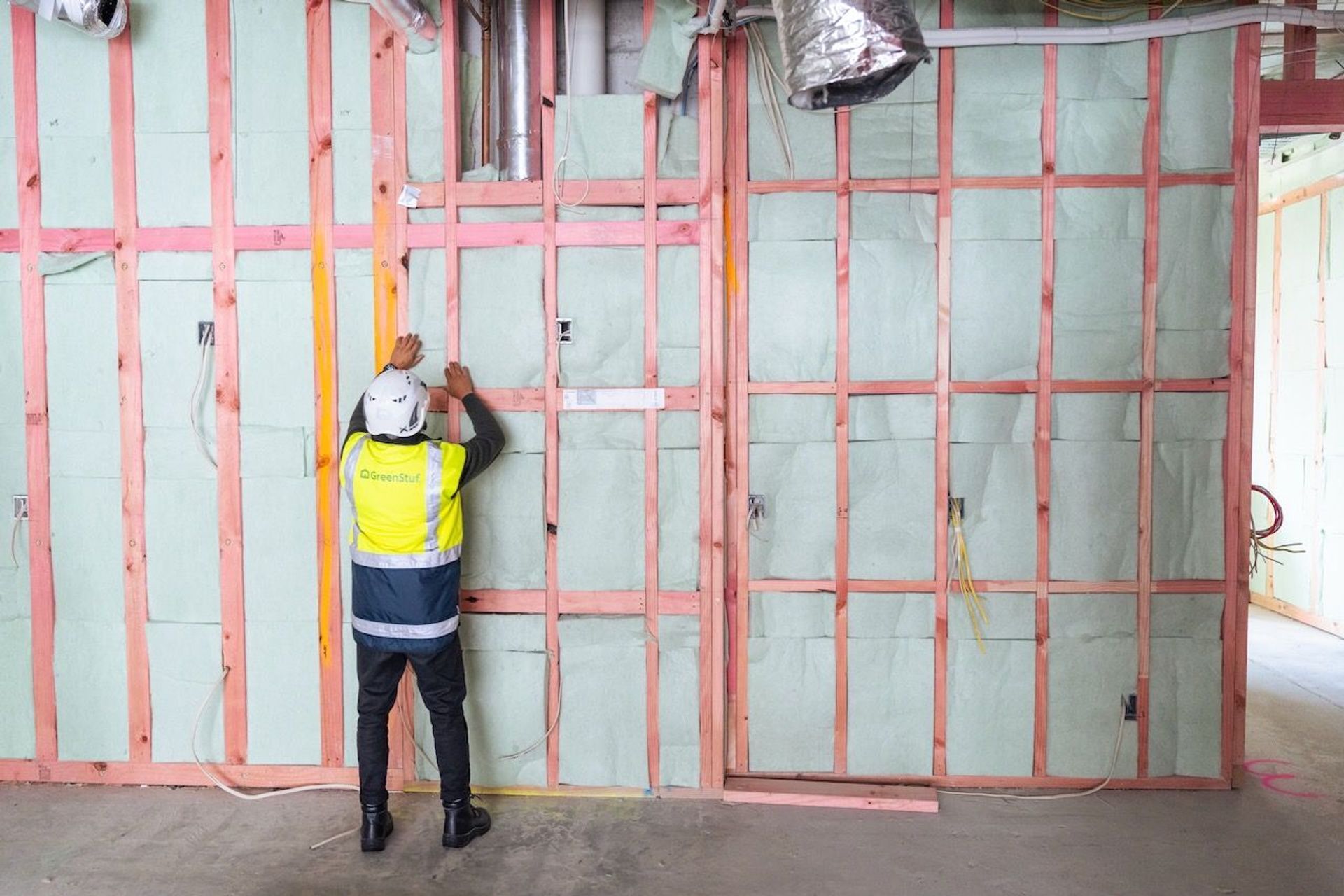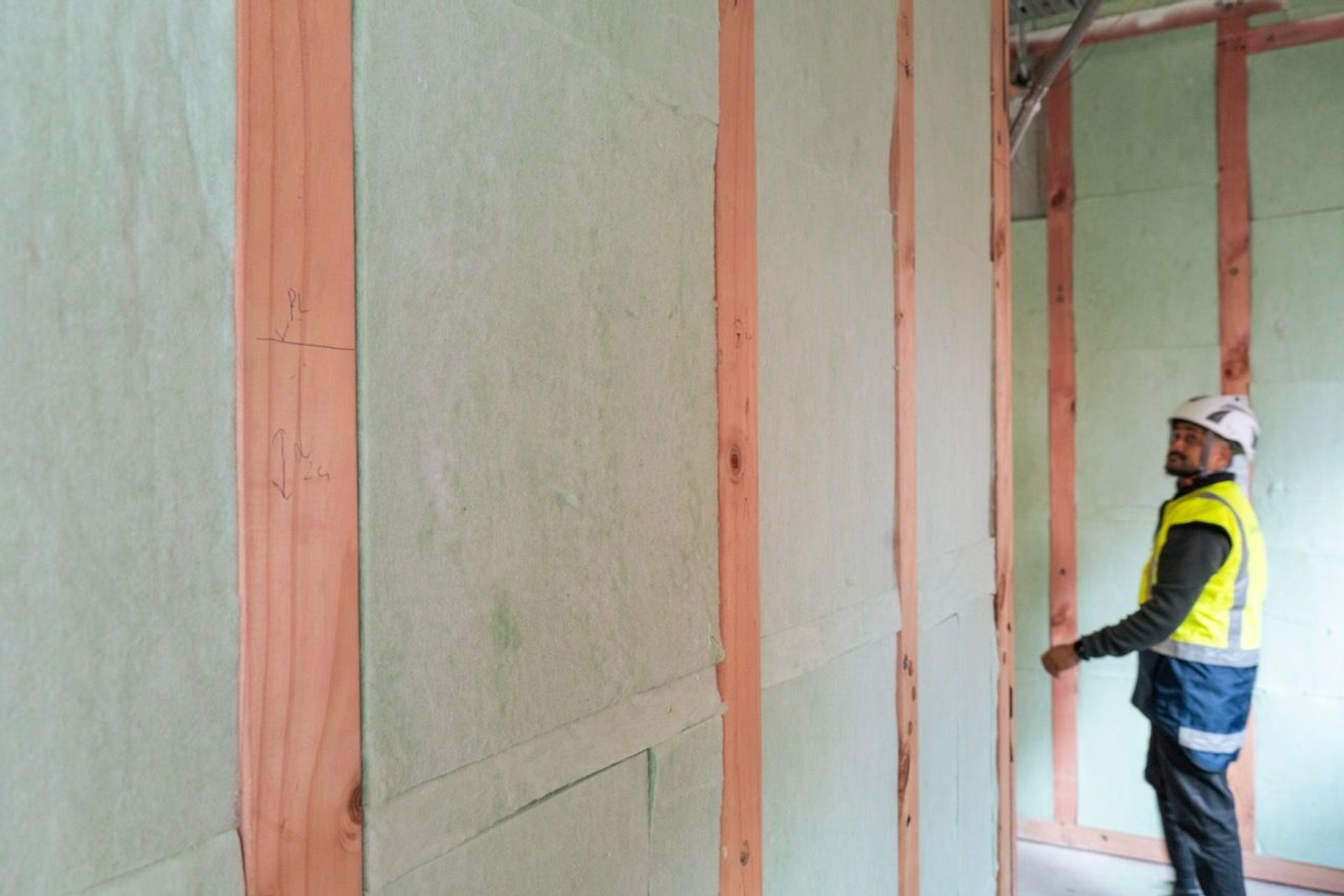Uncovering the long-term impact of high-quality insulation in New Zealand
Written by
16 June 2025
•
9 min read
New Zealand homes and buildings have a well-documented history of being poorly insulated, largely because there was no mandatory requirement for insulation here until 1978. Over the last decade, new regulations and grants have been introduced to improve this situation throughout the country.
As a result, people have become increasingly interested in insulation options for their homes and commercial projects. With this in mind, we decided to take a considered look at high-quality insulation products, speaking to TJ Jhagroo, Account Manager for Greenstuf, an industry leader of premium insulation in New Zealand.
A material difference in quality
Before wading into the merits and credentials of premium insulation, it’s important to establish the main distinction between that and what’s seen as standard insulation.
The answer lies in the material used. Standard insulation is made out of fibreglass, and was the mainstay choice for decades as a cost-effective and accessible solution. However, as TJ Jhagroo explains, it has a few inherent issues.
“Fibreglass is essentially recycled glass where the fibres are bound together using a chemical binder. The binder has got a lot of different components in it, including formaldehyde, which isn’t great, but the other thing about this binder is that it's water soluble, so if it gets exposed to condensation over time, it’ll break down and slump, negating the product's R-value.”
Premium insulation, on the other hand, is made out of polyester, which directly addresses these issues, as TJ continues.
“Quality polyester insulation is made out of recycled plastics. It's thermally bonded, so essentially, we're melting the plastic fibres together, and it's resistant to water. It's not going to slump or break down, and we've got a 50-year durability warranty to back that up.”
These material differences describe just the surface-level distinctions between the premium and standard insulation choices, which encompass health, energy efficiency, running costs and more.

Moisture management and health
Without doubt, one of the main reasons for investing in insulation is to improve the health of your home or business premises and its occupants. It’s no coincidence that the legislation introduced in 2019 to improve insulation (and more) in rental properties was called the Healthy Home Standards.
TJ says the main issue of using lower-grade insulation is the risk and impact of moisture.
“Moisture can find its way into a building through a variety of ways, and lead to mould growth, poor indoor air quality and can even damage a building structurally over time. Most insulation products will break down pretty easily when in contact with moisture, because of the water-soluble binders holding the product together. Unfortunately, even a few millimetres of slumping substantially reduces how well the insulation works. Polyester insulation, on the other hand, is made from recycled plastic bottles, which are essentially melted together. Moisture won’t cause any breakdown or slumping, so the insulation will perform exactly as it's meant to for years to come.”
The presence of mould can have significant health implications for people, as TJ elaborates.
“When you've got increased levels of mould, there are quite a lot of risk factors in terms of respiratory illnesses. In New Zealand, we've got one of the highest rates of asthma globally — 1 in 7 kids and 1 in 8 adults, so having insulation that actually does what it's meant to do is going to help regulate the indoor air quality to avoid mould growth.”
Another health benefit of polyester insulation is the absence of chemicals in the fibre bonding process.
“GreenStuf products are VOC emission safe. VOCs, or volatile organic compounds, are vapours and gases that naturally occur at room temperature. They’re common and found in household items like paints, glues and cleaning products, but prolonged exposure to them is a health risk. Insulation that has chemical binders, will have higher levels of VOCs, which affect indoor air quality. What we’re seeing with higher quality insulation, like polyester, is no VOCs.”

Energy efficiency and running costs
It’s no secret that a well-insulated building is an energy-efficient building, which will ultimately have lower running costs and utility bills. The impact here, between standard and premium insulation, can be small at first but can quickly accumulate, as TJ describes.
“The energy efficiency of a building is directly linked to insulation. If you’ve got insulation, in a wall cavity for example, even 1 cm of space between your insulation and your studs will hugely reduce the insulation's R-value performance by a large percentage, due to thermal bridging. It’s really common to see fibreglass or glass wool insulation slumping to half its size in a wall cavity over a couple of years, which means that insulation is offering no thermal performance, which leads to a building being really inefficient with its energy over time.”
Polyester insulation is more expensive than fibreglass insulation due to the manufacturing processes involved, but TJ says these costs can be clawed back over time.
“Polyester insulation offers long-term value through its energy efficiency. While it may come with a slightly higher upfront cost, its durability and performance can lead to significant savings on energy bills over time. When selecting building products, it’s important to consider whether the investment aligns with your project’s priorities. For those focused on reducing operational costs and enhancing comfort, polyester insulation can have a big impact.”
He also explains that in the context of a new building project, the proportion of spend on your overall budget is very small, which is an important factor to keep in perspective.
“Insulation on a new building project, residential or commercial, is roughly going to be around 1 - 3% of the total build cost. When you put it in perspective, and keep in mind how insulation directly affects the building’s lived environment, it becomes really easy to prioritise the performance of the building and make sure you’re spending in the right areas.”

Sustainability and environmental factors
Sustainability has become a fundamental global issue, and high-quality insulation allows individuals and businesses to make their buildings more energy-efficient, reducing their carbon footprint. This is particularly important for the latter, operating at a much larger scale with greater impact, mandated by different insulation rules and regulations for buildings that are over 300m².
While lowering a building’s carbon footprint is an important part of the overarching sustainability story, TJ says the area of manufacturing is another where huge strides have been made.
"Our products are designed to include as much recycled polyester as possible before the performance of the product is compromised and we are constantly looking for ways to increase this amount. We also have a lot of third-party certifications, which you can find on our website. We believe it is our responsibility to operate sustainably and want to be a part of building a more sustainable future."
TJ explains that wastage has also been targeted, focusing on the manufacturing line and waste that goes to the landfill, half of which comes from the building and construction sector in New Zealand. This burden not only adversely affects the environment, but also impacts the bottom line for businesses in landfill costs, which can be substantial in the building and construction industry.
“We just released the Greenstuf Take Back Programme, which is a free pick-up service of off-cuts or insulation waste from sites for recycling. With our manufacturing process, we have on-line recycling systems that allow us to reincorporate waste into new products.”
Lastly, the stigma around plastics has been fairly strong recently, but processes like those described above, and the creation of new recycled solutions, are beginning to change that.
“Plastics sometimes get a pretty bad rap when it comes to building products, but we're focusing on making our products fully circular. There’s no shortage of plastics, and we want to do something with them. We've also got products like our Greenstuf Sound Solutions Classic, which is made from at least 92% recycled content from offcuts that we're taking back from sites.”

Final tips and advice
As you can see, the impact and benefits of premium insulation are compelling, but it also needs to be balanced with careful planning and precise execution to reap its full potential.
TJ says that understanding the needs of your spaces is key to making the right choices from the outset.
“The key considerations are making sure you've got effective insulation in different areas, as you do get varying levels of heat loss. For a residential build, about 30 - 35% of the heat loss comes through the roof, 20 - 30% goes through the glazing, and around 12 - 14% goes through the floors. So if you've got that quality insulation, that's going to mitigate that heat loss through those different areas.”
He also explains that the quality of the installation is of paramount importance. Ideally, this would be done professionally, but there is the option to self-install.
“You could buy the best insulation, but a little gap from a poor install is going to be a weak point where heat is going to be escaping, which is why we’ve got a list of preferred Greenstuf installers. That being said, polyester insulation is safe to touch, so a lot of people choose to install it themselves, and we've got installation guides on our website. You just have to take a little bit of time and care.”
In his final comments, TJ says that choosing quality products also gives access to quality service, which is particularly appealing to professionals in the field.
“I think building projects that prioritise performance over aesthetics will see better quality and healthier homes built for people to live in. Commercial projects with performance in mind will be more economical and sustainable, which has advantages for their inhabitants, businesses within, and the larger community these buildings are a part of. That's things we can help with at GreenStuf, through H1 calculations which we provide in-house, or just technical advice and assisting with product selection.”
Find out more about Greenstuf and their great range of premium polyester insulation products